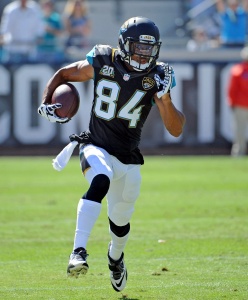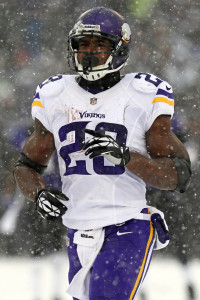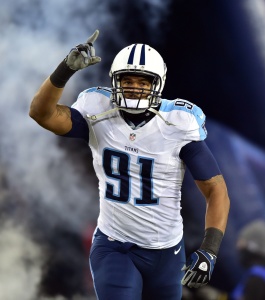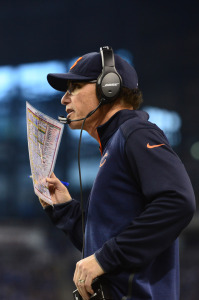Pending free agents:
- Byron Bell, T
- Chase Blackburn, LB
- Colin Cole, DT
- Ed Dickson, TE
- James Dockery, CB
- Dwan Edwards, DT
- Greg Hardy, DE
- Kevin Matthews, C
- Fernando Velasco, G
- Joe Webb, QB
- Garry Williams, T
Top 10 2015 cap hits:
- Charles Johnson, DE: $20,020,000
- Cam Newton, QB: $14,666,000
- Ryan Kalil, C: $11,795,000
- Thomas Davis, LB: $9,900,000
- Jonathan Stewart, RB: $8,300,000
- Greg Olsen, TE: $7,800,000
- DeAngelo Williams, RB: $6,333,333
- Luke Kuechly, LB: $4,002,283
- Mike Tolbert, RB: $3,425,000
- Graham Gano, K: $3,100,000
Notable coaching changes:
- None
Draft:
- No. 25 overall pick
- No traded picks
Other:
- Current projected cap room (via Over the Cap): $15.65MM
- Must exercise or decline fifth-year option for 2016 for LB Luke Kuechly.
- Top extension candidates: Cam Newton, Greg Olsen, Luke Kuechly, Josh Norman
- Already released RB DeAngelo Williams, released S Thomas DeCoud, re-signed OL Chris Scott.
Overview
If you need further evidence that the NFC South was the worst division in the NFL last season, it’s this: the Panthers regressed in nearly every major statistical category from 2013 to 2014 — they fell from 10th to 20th in offensive DVOA, while moving No. 3 to No. 14 in in defensive DVOA — shaved five wins off their final record, and gave Derek And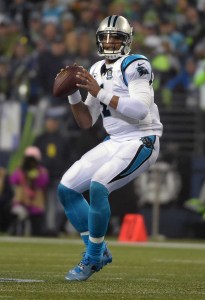 erson two starts at quarterback…and still won the division.
erson two starts at quarterback…and still won the division.
Cam Newton started 14 games — missing Week 1 with a rib injury and Week 15 after being involved in a car accident — and completed 58.5% of his passes for for 3,127 yards an 18 touchdowns; he added another 539 yards and five touchdowns on the ground. It wasn’t a spectacular season, but Newton was playing behind an offensive line that had lost Jordan Gross and Travelle Wharton, and throwing to receiving corps that had witnessed the defections of Steve Smith, Brandon LaFell, and Ted Ginn Jr.
Similarly, Carolina’s defense had been ravaged by free agency, as Mike Mitchell, Captain Munnerlyn, and Drayton Florence all left the squad before 2014. Star defensive end Greg Hardy, who had 26 sacks in the two seasons prior, missed all but one game after being placed on the commissioner’s exempt list following a domestic violence incident. Somehow, though, the Panthers managed to earn a postseason berth despite winning only seven games, and even won a playoff game, defeating the Cardinals in the wild card round before succumbing to the Seahawks in the divisional round.
The Panthers have already begun to overhaul their roster in anticipation of the new league year next month. Today we learned that the club will release longtime running back DeAngelo Williams, a move which will actually cost the team cap space (unless he’s designated as a post-June 1 cut). Williams’ release comes on the heels of Carolina cutting veteran safety Thomas DeCoud last week.
Key Free Agents
Hardy is the clear No. 1 free agent on the Panthers’roster — charges against the 26-year-old were recently dismissed, but it still remains unlikely that he’ll return to Carolina. He played last season under the franchise tag, so the cost to use that tag on him for a second consecutive season would be exorbitant. Moreover, the Panthers seem opposed to retaining Hardy due to the headache he caused last season. While not speaking about Hardy directly, Carolina general manager Dave Gettleman recently asked “Who wants the ticking time bomb?” regarding players with off-the-field concerns.
Elsewhere on the defensive line, the Panthers have two veteran tackles — Dwan Edwards and Colin Cole — eligible for free agency. Both are older free agents (Edwards is 33, Cole 34), but each played in excess of 350 snaps in 2014; Edwards, specifically, saw nearly 600 snaps. Carolina might want to get younger at the position, but a club can never have too much depth up front. Perhaps the team will look to retain at least one of Edwards or Cole on a modest, one-year deal.
Following Gross’ retirement, Byron Bell emerged as the starter at left tackle, but his production was extremely disappointing. Per Pro Football Focus’ advanced metrics (subscription required), Bell ranked as the second-worst tackle in the league, finishing ahead of only Falcons rookie Jake Matthews. Bell wasn’t as bad as the starting right tackle during the early portion of his career, but he was still well below-average. Offensive line figures to be an area the Panthers address either in free agency or the draft, and both Bell and team source indicated today that the 26-year-old won’t be retained.
On the other hand, Carolina should look to retain reserve interior lineman Fernando Velasco, who started seven games last season, seeing action at both guard positions. The 30-year-old Velasco is probably something close to a replacement level talent at this point, but he was an above-average starter as recently as 2012. The Panthers have young players — Amini Silatolu and Trai Turner — at the guard spots, so Velasco could add valuable experience as the backup both there and at center.
27-year-old tight end Ed Dickson landed with in Carolina on a one-year deal prior to 2014 after spending his entire career with the Ravens. He played 532 snaps as the No. 2 TE to Greg Olsen, but wasn’t a standout blocker and caught only 10 passes. Dickson has expressed interest in re-signing with the Panthers on a multi-year deal (a lofty goal), but the club can probably do better.
Possible Cap Casualties
The Panthers don’t have a ton of players who could be pushed off the roster due to salary cap concerns. The only obvious candidate for release might be RB/FB Mike Tolbert, who’s scheduled to count $3.425MM against the cap next season. The 29-year-old is entering the final season of his two-year deal, and Carolina could clear $2.425MM in space by releasing him. He saw just 226 snaps in 2014, but given that the club just cut Williams, Tolbert’s role figures to grow in 2015, making his release unlikely.
Releasing veterans Jerricho Cotchery and Roman Harper could give the Panthers a combined $3MM windfall (if both were post-June 1 cuts). But both saw an extended amount of playing time last season, and performed at a capable level, so cutting them probably doesn’t make sense.
Positions Of Need
Pending any further cost-cutting maneuvers, the Panthers should have roughly $15.65MM of cap space to work with as free agency approaches. It’s not a ton of room, but Gettleman indicated last month that the club wouldn’t have to shop at the “dollar store” this offseason, meaning they probably won’t need to target the bargain-bin type of free agents they have during the past two years (although I would note that many of those low-cost signings worked out rather well).
The No. 1 area of concern on the Panthers roster — offensive line — hasn’t changed since last year. Tackle, specifically, needs to be upgraded, with Bell unlikely to return and right tackle Nate Chandler also not showing improvement. Following King Dunlap‘s re-upping with the Chargers on Sunday, there aren’t many options on the left side. If Michael Roos decides to hold off on retirement, I wonder if the Panthers would pay a premium to land the veteran. Alternatively, Carolina could try for Bryan Bulaga, the top right tackle available, with the intention of moving him back to the left side, the position he played in college. Or, Carolina could sign Bulaga, Doug Free, or another solid right tackle, and pursue a LT upgrade with the No. 25 pick in the draft.
If it solves its problem at tackle, Carolina could then shift its focus to receiver. Kelvin Benjamin was a revelation in his rookie season, but the club could use another weapon opposite him. Luckily, the free agent market for WRs is flush with options. Jeremy Maclin might be a little out the Panthers’ price range, but Torrey Smith could be a viable target. Moving a little further down the list, Michael Crabtree could be signed with the hopes of bounce-back season, or perhaps Denarius Moore tries to restart his career in Carolina.
Assuming that Hardy leaves for greener pastures, the Panthers will also need help at defensive end. In terms of pure skill, Carolina might not find anyone with the talent level that Hardy brings to the table, but there are certainly other options out there. Brandon Graham was solid for the Eagles in 2014, but if reports of him demanding $20MM in guarantees are true, he’d probably be too spendy for the Panthers. If the club continues its strategy of signing seemingly over-the-hill veterans, I could see them adding Osi Umenyiora, who wasn’t great as a stand-up pass-rusher with the Falcons but could succeed if returned to a 4-3 DE role, or taking on a chance on a 35-year-old Dwight Freeney.
Corner could be another area of concern, although Josh Norman and Bene Benwikere played very well, especially near the end of last season. The free agent CB market is barren, so that’s an area that will probably be addressed via the draft instead. With the release of Williams, the Panthers might also look to bring in another back to complement Jonathan Stewart, who often deals with injury concerns. I doubt they’d spend any significant money on the position, but they could bring in someone like Daniel Thomas or Jacquizz Rodgers as a insurance option.
Extension Candidates/Contract Decisions
The most pressing issue in Carolina at the moment is the future of Newton, who is signed through only 2015 thanks to the Panthers exercising his fifth-year option; he’ll be paid $14.67MM during the upcoming season. Joseph Person of the Charlotte Observer reported over the weekend that the Panthers and Newton’s reps were set to meet at the combine in Indianapolis to begin discussing an extension, but noted that Newton prefers to let Andrew Luck and Russell Wilson ink out long-term deals first, setting the market for QB deals.
Newton probably won’t see the type of cash that Luck and Wilson will — rather, he’ll probably shoot for an AAV in the $20MM range. He’s already made it clear that he isn’t interested in a Colin Kaepernick-esque contract structure, so it sounds like he’ll be aiming for some relatively large guarantees. The Panthers could use the franchise tag on Newton in 2016 (at a hefty price), but I’d expect the two sides to agree to a deal at some point.
2013 Defensive Player of the Year Luke Kuechly is probably the best inside linebacker in the league, and among the top five or 10 defensive players in the game. The Panthers have a fifth-year option on him that will keep him under contract for the 2016 season at a reasonable rate. But Carolina can now open extension talks with their 23-year-old defensive stalwart, and Kuechly should be able to top the $10MM average salary brought in by Patrick Willis, currently the top earner among inside ILBs.
Olsen will become a free agent at season’s end, at it make sense for the club to get something done with him, as well. With major departures at wide receiver, Olsen (along with Benjamin) became Newton’s primary target, hauling 84 passes for more than 1,000 and six scores. He’ll be 30 years old next month, so he’s not young, but he should still be able to secure a three- or four-year commitment, possibly in the $7-8MM per year range.
Finally, Carolina will probably need to take a look at the contract of veteran defensive end Charles Johnson before the season. The eight-year veteran is scheduled to count $20.02MM against the cap next season, the highest such figure among 4-3 defensive ends. He’s still an excellent player (PFF’s No. 11 4-3 DE), so he’s not a candidate for release, but the Panthers probably need to ask Johnson to restructure his deal, something he’s done in each of the prior two offseasons. He only has two years left on his current pact, which doesn’t leave much room for spreading out prorated bonus money. So instead of a simple restructure, Carolina might need to extend him, tacking on a few years to his contract to make the forthcoming cap hits more palatable.
Overall Outlook
To the casual fan, the Panthers are coming off a highly-successful two-year run during which they made the playoffs in both seasons. More tuned-in observers, however, realize that Carolina was extremely lucky to play in such a subpar division last season, and that there are still numerous holes on the current roster. Newton needs to be re-signed, but Gettleman and head coach Ron Rivera can’t rest until other areas on the team — tackle, receiver, defensive end — are addressed, as well.
Information from Over The Cap was used in the creation of this post. Photo courtesy of USA Today Sports Images.
